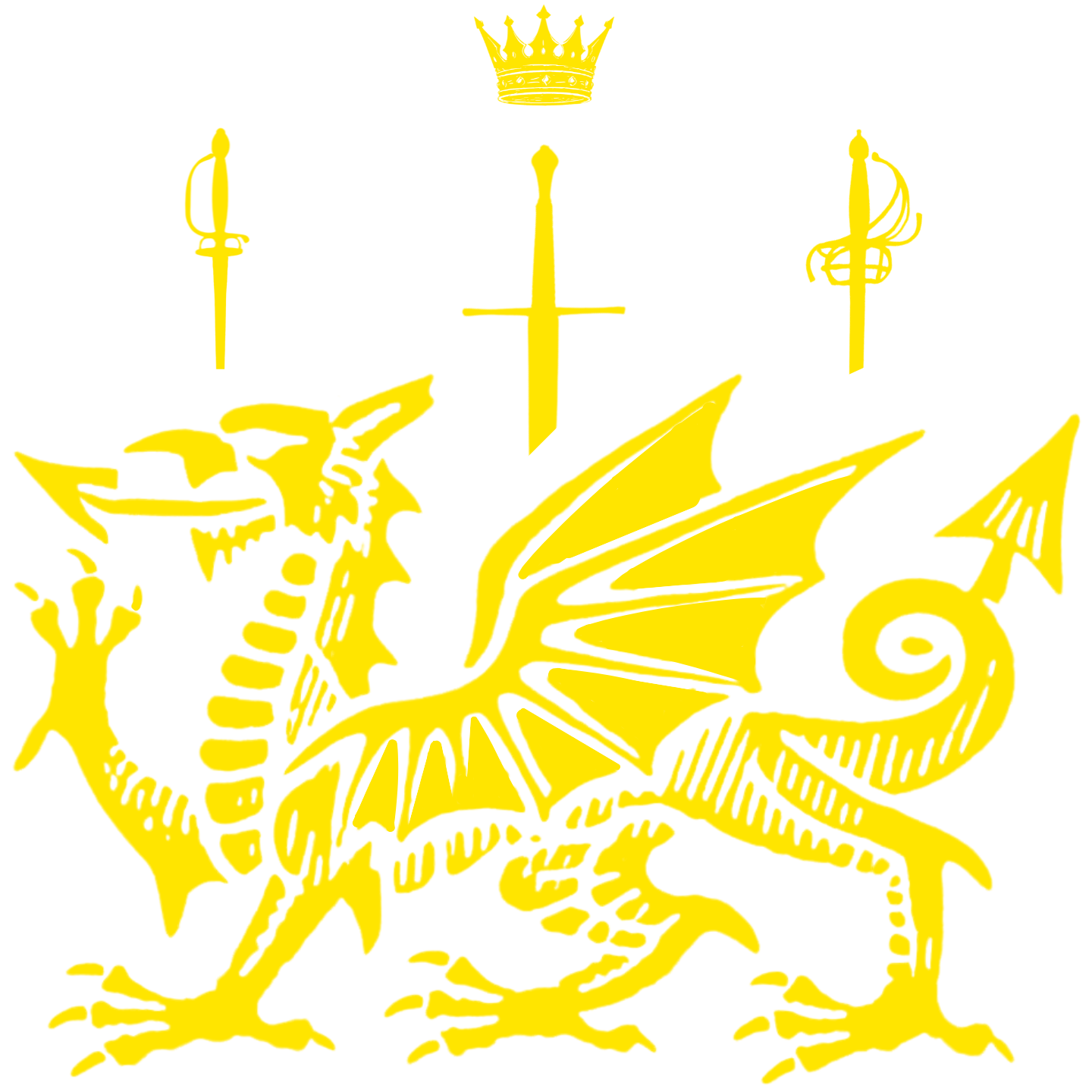As Halloween approaches, many of us have our traditional ways of celebrating the holiday with our families and our communities. Some of the traditions we have today are fairly modern developments, but many of them have relationships to historical beliefs. In this article, we’ll explore some of the historical beliefs surrounding Halloween-time and hopefully learn something new about where our modern traditions come from.
Halloween postcard, early 20th century
We’ll start off with the basic history of the holiday itself, and then get more specific with the origins of some of our current traditions. Our modern Halloween is influenced by 2 separate historical traditions.[1] One of these is the Christian Allhallowtide, which is made up of 3 days. It begins with All Hallow’s Eve on October 31st, which is followed by All Saint’s Day (or All Hallow’s Day) on November 1st and lastly comes All Soul’s Day on November 2nd.[2] All Hallow’s Eve (which can also be shortened to Hallowe’en) begins it all with a nighttime vigil, All Saint’s day continues with a celebration of all the saints, and All Soul’s Day is a day of prayer and remembrance for the dead.
The Forerunners of Christ with Saints and Martyrs, Fiesole, Italy about 1423-24
The other tradition is the pagan Samhain. This was a festival held between the fall equinox and the winter solstice to “welcome the harvest and usher in “the dark half of the year.””[3] They believed that at this time of the year, the borders between the worlds of the living and the dead became thinner, which allowed spirits to move between our worlds.[4] Bonfires were often lit to provide protection from the supernatural.[5] Over time, these 2 originally separate traditions seem to have blended, and they ultimately influenced the development of our modern Halloween.
From Luttrell Psalter, Northern England 1325-40
Some of our modern traditions for the holiday also have their origins in historical practices. For instance, during Samhain they would sometimes dress up in costumes to either scare away the malevolent spirits, or to blend in with them.[6]
From Romance of Alexander, Bruges, Belgium 1400
The well known tradition of carving pumpkins also has its origins in historical beliefs, though not in the exact form we know today. In the 19th century (as with many folk traditions, it’s hard to say how much further this tradition goes back) people in the British Isles were carving faces into root vegetables; mainly turnips, though sometimes they also used potatoes, radishes and beets. They placed lit candles inside the carved turnip, much like the modern pumpkin jack-o’-lanterns. They believed that by having these carvings outside their homes or by carrying them as lanterns they offered protection.[7]
Jack O Lantern, Donegal, Ireland 1903
Work Cited
References for information in text-
Steward, Medieval. “What is Samhain? Discover the Old History of Halloween Celebration.” Discover Middle Ages, 28 October 2015, https://www.discovermiddleages.co.uk/medieval-life/the-history-of-halloween.
McDonald, Thomas L. “The Season of the Dead: The origins and practice of Allhallowtide.” Catholic World Report, 24 October 2018, https://www.catholicworldreport.com/2018/10/24/the-season-of-the-dead-the-origins-and-practice-of-allhallowtide/.
“Samhain - Traditions, Halloween, Wicca.” HISTORY, 5 October 2022, https://www.history.com/topics/holidays/samhain.
“Was Halloween Celebrated in the Middle Ages?” Medieval Britain, 7 October 2020, https://medievalbritain.com/type/medieval-life/activities/halloween-middle-ages-celebrations/.
Campsie, Alison. “Samhain: Bonfires, neeps and guising in sheep skulls during the festival that became Halloween.” The Scotsman, 29 October 2021, https://www.scotsman.com/heritage-and-retro/heritage/samhain-bonfires-neeps-and-guising-in-sheep-skulls-during-the-festival-that-became-halloween-3437842.
Fields, Kitty. “A Brief History of Mummers and Guising.” HubPages, 19 May 2015, https://discover.hubpages.com/education/The-History-of-Mummers.
Nalewicki, Jennifer. “When People Carved Turnips Instead of Pumpkins for Halloween.” Smithsonian Magazine, 22 October 2021, https://www.smithsonianmag.com/smart-news/when-people-carved-turnips-instead-of-pumpkins-for-halloween-180978922/.
Original sources for images used here-
Halloween postcard, early 20th century, found on- https://www.history.com/news/halloween-trick-or-treating-origins
Fiesole San Domenico Altarpiece, Fiesole, Italy about 1423-24- https://www.nationalgallery.org.uk/paintings/fra-angelico-the-forerunners-of-christ-with-saints-and-martyrs
Luttrell Psalter, Northern England 1325-40- https://www.bl.uk/turning-the-pages/?id=a0f935d0-a678-11db-83e4-0050c2490048&type=book
Bodleian Library MS. Bodl. 264, Bruges, Belgium 1400- https://digital.bodleian.ox.ac.uk/objects/60834383-7146-41ab-bfe1-48ee97bc04be/surfaces/90701d49-5e0c-4fb5-9c7d-45af96565468/
Jack O Lantern, Donegal, Ireland 1903- https://pilgrimagemedievalireland.com/tag/turnip-carvings/





